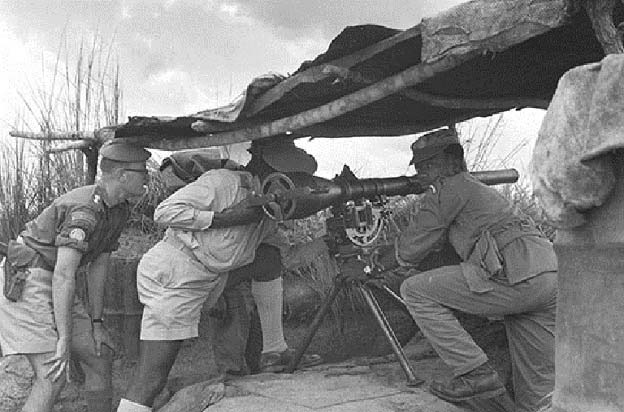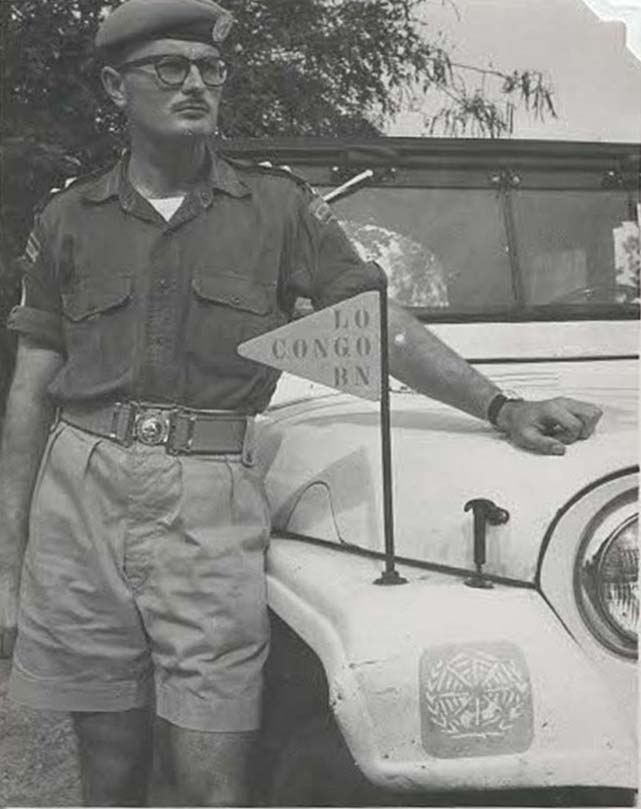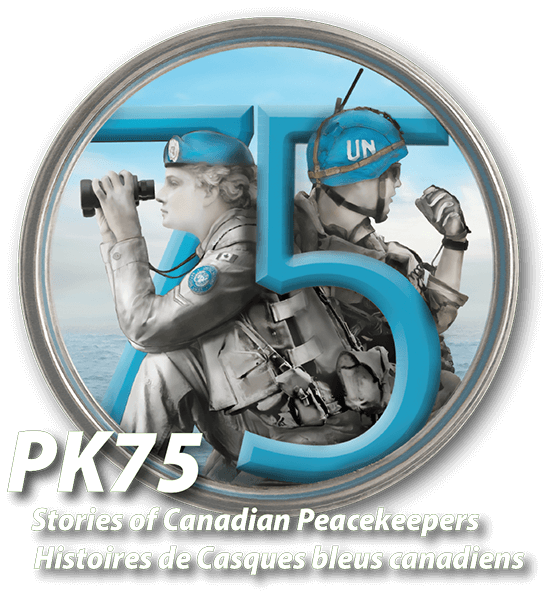

In 1962, as a 23-year-old lieutenant, I was looking forward to my posting to the Belgian Congo. It was in a state of chaos after a hasty, unplanned independence, followed by the illegal return of Belgian forces that made matters worse. The central government had collapsed, and Prime Minister Lumumba was murdered. Mineral-rich Katanga separated, militarizing its Gendarmerie with Belgian and French officers, an air force, and murderous, mercenary groupes mobiles.
When I arrived at Kamina as the UN Liaison officer to a Congolese battalion, the UN “peace enforcement” mission (ONUC), was now the largest and most robust UN mission in history. This Katanga separation was its main issue.
However, two major ONUC operations against the Katangese forces had already been halted by political considerations in UN New York. UN Secretary-general Dag Hammarskjöld set out to negotiate a cease-fire with Moïse Tshombe of Katanga but was killed by a very suspicious plane crash on the way to the meeting in September 1961.
U Thant replaced Hammarskjöld as Secretary-General, taking a much more forceful approach. A new UN Security Council resolution authorized clearly “the use of force”. Major General Prem Chand launched Operation Grandslam on 28 December 1962, with U Thant’s approval, using a division-size UN force. He successfully seized downtown Elisabethville, capital of rebellious Katanga.
I was involved in the next phase of Grandslam, that sought to remove the remaining Gendarmerie and mercenary strongholds in Southern Katanga. On New Year’s Eve, I moved with a company of the 2nd Congolese Battalion. Our objective was Kabongo, a Groupe Mobile D base. There was no road, only a rail line — and that is what we used! It worked well until the train rolled over an explosive booby-trap that broke the rails. Dozens of soldiers had to push the box cars back into their place, after fixing the rails.
When we reached Kabongo, the population had fled into the bush and there was no sign of the mercenaries. Unfortunately, before leaving they had created a thoroughly camouflaged anti-personnel minefield that surrounded the village water well. One of our men was killed immediately. His sergeant was lying unconscious further in the minefield. We managed to get him out, but the shrapnel in his head was obviously fatal. We were unable to do anything for him. The Swedes were too far away for medical evacuation; the Congolese medic had nothing in his kit that could help; and all I could do was hold him while he died on the floor of a bombed out shed. I will never forget that frustration of not being able to do something.
The Kamina UN contingent continued over the next weeks to search for mercenaries. In the meantime, the Congolese battalion dealt with the villages where tribal militias were known to reside. These groups liked formality. They formed up in three ranks when the trucks of the Congolese battalion rolled into their village in the early morning. Then their leader made a declaration of loyalty to the central government. They all seemed genuinely pleased that the Katanga regime had been overthrown in ONUC’s third and last offensive.
After six months with the Congolese battalion, I returned to Leopoldville for another six months in the Intelligence branch of UNOC headquarters (called “military information” by the UN). The bilingual Canadian “military information” team facilitated American support of the Congolese army, by acting as intermediary. Gen Mobutu and his staff enjoyed and trusted Canadian officers. My role was to visit occasionally my former battalion, now moving North in Katanga, getting updates on the Congolese army’s impact on the population.
I returned home, 13 months after my arrival, saddened by the international political intrigue that continued to frustrate peace and development, and which continued for many decades. At the same time, I was also impressed by the ability of robust, peace enforcement operations to put an end to such conflicts, if provided with intelligent political direction and support. These views remained etched in my mind during my subsequent 40 years of participation in peace missions.
Biography
Terry was raised in Outremont (Montréal). He has a BA from Queens U., a master’s in public administration from ENAP, has passed Staff College, and attended the National Defence College one-year course.
Terry joined the Regular Army in 1957 as an officer cadet and was commissioned into the Royal 22e Régiment in Valcartier in 1958. He served 15 years in command positions, mostly within his Regiment. As a 2nd Lieutenant, he commanded a parachute platoon in the 2nd Battalion. Then, as a lieutenant, he was detached for 13 months to a UN peacekeeping mission in the ex-Belgian Congo, where he was awarded the medal of the Order of the British Empire (MBE) for “gallantry”. In 1965, Terry served two years as a Captain in his battalion in Germany. Promoted major, he commanded an infantry company in the 2nd battalion, at the Citadel in Québec City, and then for another two years in the 1st Battalion in Lahr, Germany. Finally, in 1975, Terry commanded the 1st battalion in Germany as a lieutenant colonel.
In 1983, as a brigadier general, Terry took command of the French-speaking brigade group in Valcartier for two years. The mission of his 5,000 soldiers and helicopter crews was to reinforce Norway, in case of a demand by this NATO country. He initiated a trans-Atlantic exercise to show the willingness and capability of Canada to respond. It was successfully executed by his replacement in 1986. In the interim, Terry provided troops to meet peacekeeping tasks. In particular, he conducted two rotations to replace the Canadian battalions in Cyprus. In 1987, as a major general, Terry was tasked to support the Secretary General of the United Nations in New York. As head of an international military “Technical Team”, he produced a military plan for a peace force that would supervise a future referendum on the independence of the Western Sahara, should a ceasefire be agreed by the parties.
Between command positions, Terry served 13 years in a succession of demanding staff mandates. In 1967, he was a staff captain in the Headquarters of the new French-speaking brigade created in Valcartier. As a major, he was on the operations staff of Mobile Command in St. Hubert, QC, which was, in reality, the headquarters of the Army. There, in 1974, he dealt with the invasion of Cyprus by Turkey in response to a Greek Cypriot coup d’état. He was at the heart of the staff effort that moved the rest of the Canadian Airborne Regiment from Edmonton to Cyprus, along with its supplies and combat equipment. As well, M113 armoured vehicles were borrowed from the Canadian brigade in Germany and rushed to Cyprus.
Terry subsequently returned to Mobile Command in 1977 as a lieutenant colonel, and then colonel, in the position of Director of Doctrine and Training. Amongst other tasks, he was secretary for the Army “combat development” process. Terry was then posted to the National Defence Headquarters in Ottawa as a “Senior Policy Analyst” in the division responsible for the Government’s defence policy. In 1985, as a brigadier general, Terry returned to National Defence HQ in Ottawa, as head of the Public Affairs branch. Then, as a major general, he became Chief, Operational Planning and Force Development, under the Deputy Chief, Defence Staff (DCDS). Amongst other tasks, he oversaw the conduct of Canada’s ongoing peacekeeping operations as well as plans for new operations. One of the new Canadian missions was the urgent communications support of a rapidly created international observer mission created in 1988 by the UN to oversee the ceasefire in the war between Iran and Iraq.
On retirement from the Army in 1988, Terry served for 13 years as a senior executive at Davie Shipbuilding, and then with Canadian Pacific Railway. Subsequently, he was a frequent commentator on Radio-Canada current affairs programmes and was named a research fellow at the Université du Québec à Montréal.
Terry also serves in volunteer positions helping veterans. He has been a governor in the Québec Division of the Corps of Commissionaires since 2001, as well as being a member of the Commissionaires’ National Public Affairs committee for six years.
Terry served in the honorary position of Colonel of the Royal 22e Régiment, from 2001 to 2006. He visited the regiment’s units on operations in Bosnia (ex-Yugoslavia) and, in 2004, in Afghanistan. He then played a key role in organizing the regiment’s centennial celebrations.
In 1965 he married Louisette Desrosiers of Québec City. They have two daughters and four grandchildren.

Lt Liston and Maj Yossa, CO 2nd Congolese Battalion, check the field of fire of his anti-tank recoilless rifles. Kamina, 1962.

Lt Liston, liaison officer to the 2nd Congolese Battalion. Kamina, 1962.


